What Are Tubs Best Suited for Your Needs?
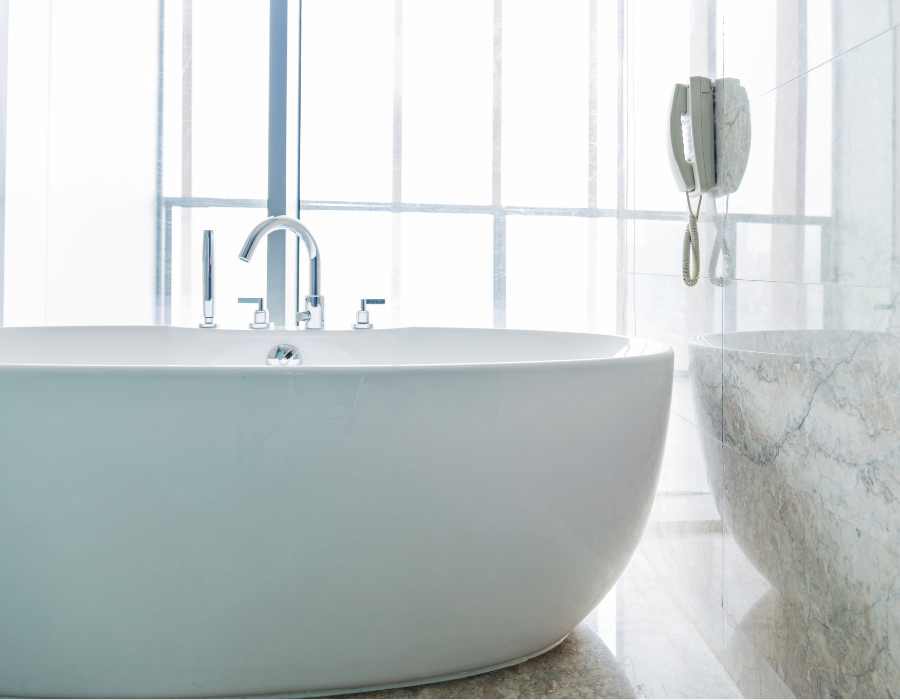
Ever walked into a bathroom and felt your worries melt away at the sight of a beautiful bathtub? There’s something magical about finding the perfect tub – it’s like discovering a personal oasis right in your home.
But here’s the thing: picking the right tub isn’t always a walk in the park. With so many options out there, it’s easy to feel overwhelmed. Should you go for a classic clawfoot or a sleek modern design? What about size, material, and features?
In this guide, we’ll explore the different types of tubs, from old-school classics to modern walk in tubs. We’ll look at what they’re made of, how they work, and which ones might be the best fit for your bathroom and budget. By the time we’re done, you’ll be ready to pick the perfect spot for your rubber ducky to call home.
Understanding Different Tub Materials
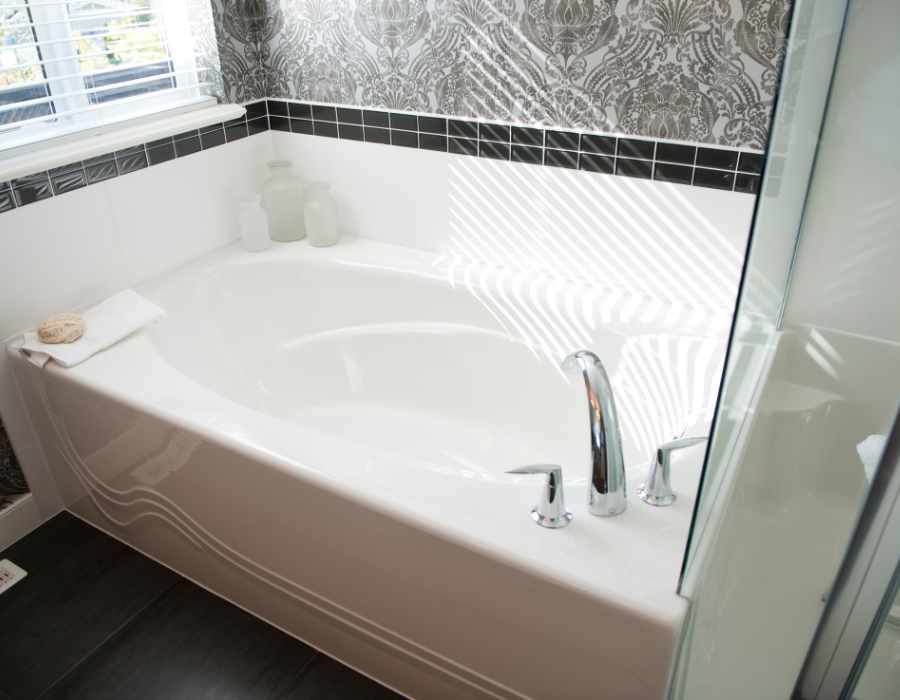
Cast Iron Tubs
Cast iron tubs are renowned for their durability and timeless appeal. Made from molten iron poured into a mold, these tubs are coated with enamel to provide a smooth, attractive finish.
One of the main advantages of cast iron tubs is their excellent heat retention, keeping your bath water warm for extended periods. Their longevity is another plus, as they can last for decades with proper care.
Additionally, the glossy finish and sturdy build offer a classic, luxurious appearance. However, cast iron tubs are very heavy, often requiring reinforced flooring and professional installation. They are also generally more expensive compared to other tub materials.
Acrylic Tubs
Acrylic tubs have gained popularity due to their versatility and affordability. They are made from vacuum-formed acrylic sheets, which are then reinforced with fiberglass. Acrylic tubs are much lighter than cast iron, making them easier to install.
Acrylic tubs come in numerous shapes, sizes, and colors, offering a wide variety to suit any bathroom design. Typically, they are more affordable than cast iron and other premium materials.
However, the surfaces can scratch more easily, requiring careful maintenance, and acrylic does not retain heat as well as cast iron, leading to quicker cooling of bath water.
Fiberglass Tubs
Fiberglass tubs are one of the most economical choices, made from reinforced plastic and coated with a gel layer. They are lightweight and easy to install, often being a good option for DIY projects. Fiberglass tubs are also budget-friendly, making them an attractive choice for many homeowners.
However, fiberglass tubs are less durable than other materials and more prone to cracking and fading over time. The gel coating can wear down, requiring more frequent maintenance.
Stone Resin Tubs
Stone resin tubs combine natural stone and resin to create a luxurious, durable bathing option. They are highly resistant to cracks and chips, providing long-lasting use. These tubs are excellent at retaining heat, ensuring a warm bath for an extended period, and they offer a unique, luxurious look that enhances bathroom design.
Like cast iron tubs, stone resin tubs are heavy and may need reinforced flooring. They are also generally more expensive than acrylic and fiberglass options.
Enameled Steel Tubs
Enameled steel tubs are made from steel coated with porcelain enamel, offering a blend of durability and affordability. These tubs are typically less expensive than cast iron and stone resin and have good heat retention, keeping bath water warm for a reasonable duration.
The enameled surface is resistant to scratches and stains. However, enameled steel tubs are heavier than acrylic and fiberglass, requiring careful installation. The enamel coating can chip if struck by heavy objects.
ALSO READ: What are Tubs Made of? A Breakdown of Bathtub Materials
Exploring Different Tub Styles
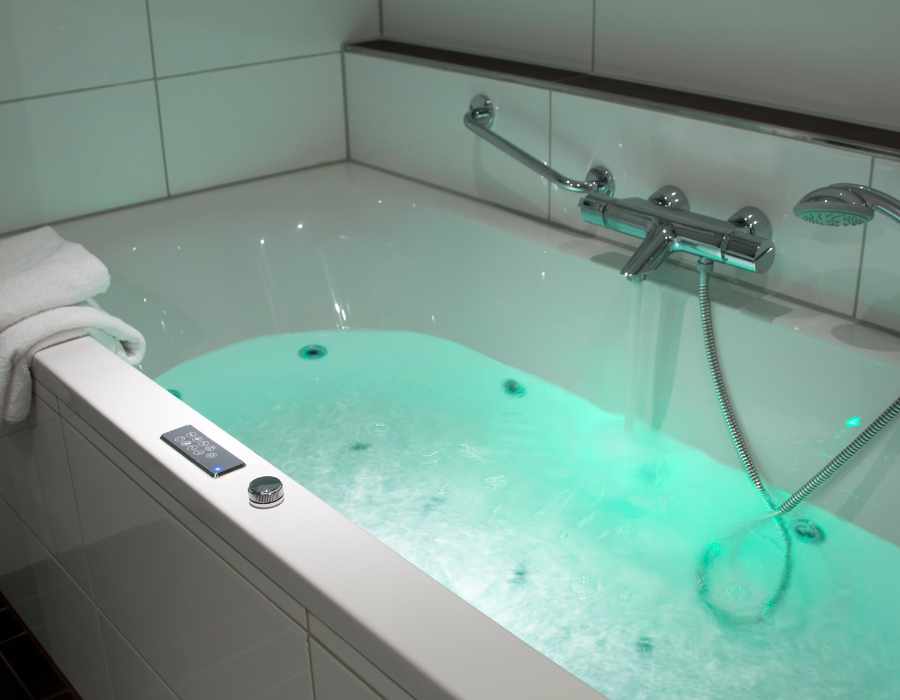
Freestanding Tubs
Freestanding tubs are not attached to walls or floors, offering flexibility in placement and design. They create a focal point in the bathroom with a stylish and elegant look. Available in various shapes, sizes, and materials, freestanding tubs can match any decor. They can be placed anywhere in the bathroom, providing creative design possibilities.
Japanese Soaking Tub
Japanese soaking tubs, or ofuro, are deep tubs designed for a relaxing, immersive bathing experience. Japanese soaking bathtub allows for full submersion, providing a calming and therapeutic bath. Their compact and deep design makes them suitable for smaller bathrooms, adding an element of traditional Japanese culture to the space.
Clawfoot Tubs
Clawfoot tubs feature four ornate feet and a vintage design, reminiscent of the 19th century. They are perfect for traditional bathroom designs and serve as an eye-catching centerpiece. Clawfoot tubs offer a classic, timeless appeal that enhances the overall aesthetics of the bathroom.
Whirlpool Tubs
Whirlpool tubs are equipped with jets that provide a massaging effect, ideal for relaxation and therapeutic purposes. The built-in jets offer a soothing massage, perfect for relieving muscle tension and enhancing relaxation. These tubs promote well-being and are a great addition to any bathroom for those seeking a spa-like experience.
Alcove Tubs
Alcove tubs are installed in a three-wall enclosure, making them a practical and space-efficient choice. They maximize space in compact bathrooms and are often combined with a shower, providing versatility in use. Alcove tubs are a popular choice for small to medium-sized bathrooms.
Garden Tubs
Garden tubs are large, oval-shaped tubs designed for luxurious soaking experiences. They require more space, making them ideal for expansive bathroom layouts. Garden tubs offer a deep and spacious bathing experience, perfect for relaxation and unwinding.
Drop-in Tubs
Drop-in tubs are installed within a constructed deck or enclosure, offering a customized look. They allow for creative design and integration with bathroom decor. Drop-in tubs can be tailored to fit specific aesthetic preferences, providing versatility in design.
Undermount Tubs
Undermount tubs are similar to drop-in tubs but are installed beneath a deck, providing a seamless look. They offer a sleek and minimalist appearance, making them ideal for modern bathrooms. The edge of the tub is concealed, making cleaning more straightforward and maintaining a tidy bathroom space.
Factors to Consider When Choosing a Tub

Bathroom Space and Layout
When choosing a tub, the size and layout of your bathroom play a crucial role. Measure your space accurately and consider the placement of other fixtures like sinks, toilets, and storage units.
Ensure the tub fits comfortably within the space without making the bathroom feel cramped. Freestanding tubs may require more space around them, while alcove tubs are better suited for smaller, enclosed spaces.
Bathtub Shape and Size
The shape and size of the tub affect both the aesthetics and functionality of your bathroom. Standard bathtubs are rectangular and fit well in most layouts, while freestanding and clawfoot tubs come in various shapes, including oval and round, offering more design flexibility.
Choose a size that accommodates the users comfortably; larger tubs are better for soaking and relaxation, while smaller tubs can be practical for everyday use.
Heat Retention and Comfort
Different bathtub materials retain heat differently, impacting your bathing experience. Cast iron, stone resin, and enameled steel tubs are excellent at retaining heat, keeping the water warm for longer periods.
Acrylic and fiberglass tubs cool down faster but are lighter and easier to install. Consider how long you typically spend in the bath and choose a bathtub material that aligns with your comfort needs.
Installation Requirements
Some tubs require more complex installation processes and reinforced flooring. Cast iron and stone resin tubs are heavy and might need additional structural support, whereas acrylic and fiberglass tubs are lightweight and easier to install.
Drop-in and undermount tubs require a custom-built deck or enclosure, adding to the installation complexity and cost. Ensure your bathroom can accommodate the installation requirements of your chosen tub.
Health Benefits and Therapeutic Features
Consider the health benefits and therapeutic features different tubs offer. Whirlpool tubs with jets can provide a massaging effect, helping to relieve muscle tension and promote relaxation. Japanese soaking tubs offer a deep, immersive experience that can be very calming. Soaking tubs in general are excellent for stress relief and can improve circulation.
Budget Considerations
Your budget is a significant factor in choosing a tub. Acrylic and fiberglass tubs are generally more affordable, while cast iron, stone resin, and high-end acrylic options are more expensive. Factor in not just the cost of the tub itself but also the installation and potential structural modifications needed to support heavier tubs.
ALSO READ: Analyzing Walk-In Tubs Cost: Is It Worth It?
Additional Features and Accessories
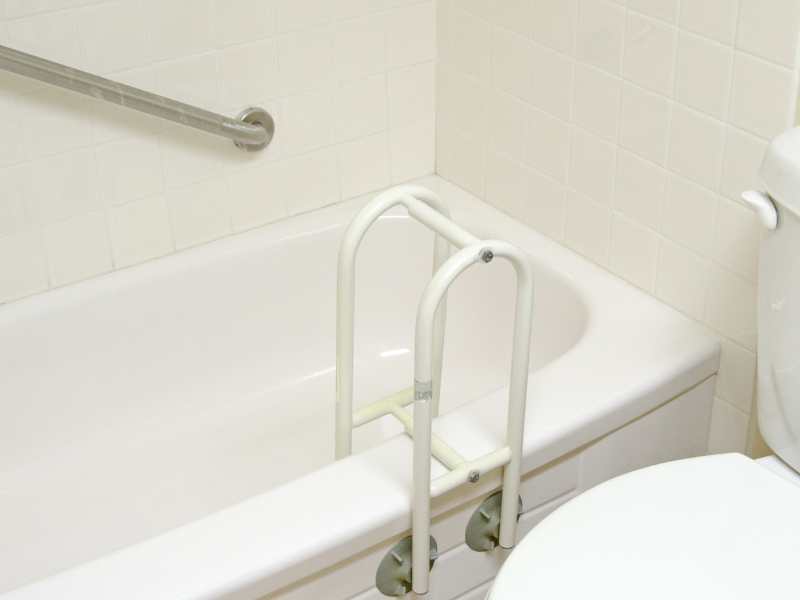
Grab Bars and Safety Features
Safety features like grab bars are essential, especially for older adults or those with mobility issues. Grab bars can be installed in and around the tub to provide support and prevent slips and falls. Non-slip surfaces and built-in seats are other features that enhance safety and comfort.
Overflow Drains and Water Efficiency
Overflow drains prevent water from spilling over the edge of the tub, which is especially useful for deep soaking tubs. Water efficiency is another consideration; some tubs are designed to use less water without compromising on the bathing experience, which can be both environmentally friendly and cost-effective.
Shower Heads and Combination Units
For those who want the option of both a bath and a walk in shower, combination units with a shower head and tub are ideal. Alcove tubs often come with a built-in shower head, providing versatility in a compact space. Choose a shower head with adjustable settings to enhance your bathing experience.
Aesthetic Enhancements
Aesthetic enhancements like gel coating, enamel coating, and decorative finishes can elevate the look of your tub and bathroom. Gel coating provides a high-gloss finish that is durable and easy to clean. Enamel coatings add a smooth, glossy surface that is resistant to scratches and stains. Decorative finishes, such as clawfoot designs or custom-built surrounds, can make your tub a focal point in the bathroom.
Innovative Tub Features and Technological Advancements
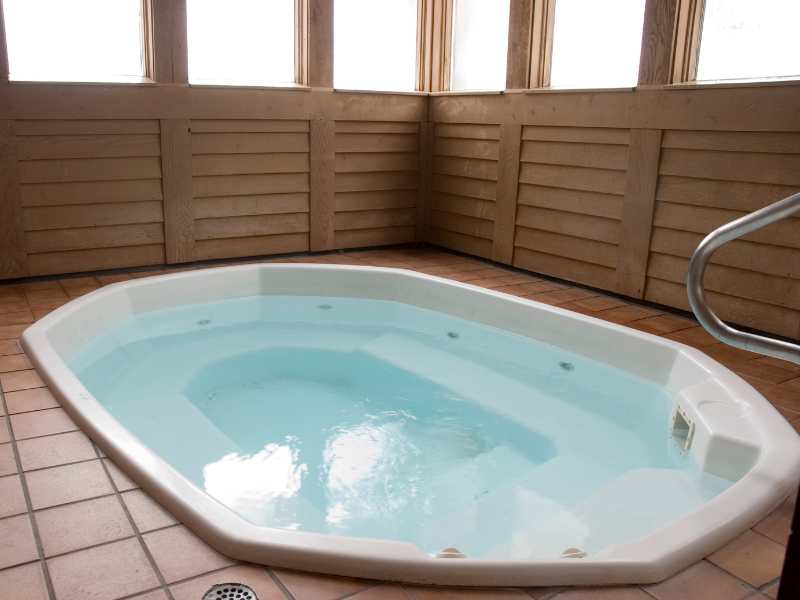
Smart Tub Technology
In recent years, smart technology has revolutionized various aspects of our homes, and bathtubs are no exception. Smart tubs are equipped with advanced features that enhance the bathing experience through automation and customization.
Smart tubs can be programmed to fill with water at a specific temperature and depth, ensuring a perfect bath every time. Some models even allow you to control the tub remotely via a smartphone app, so you can have a warm bath ready when you get home.
Integrated Sound and Lighting Systems
Modern bathtubs now often come with integrated sound and lighting systems designed to create a spa-like atmosphere in your bathroom. Freestanding bathtubs and soaking bathtubs can be enhanced with ambient LED lighting that changes colors to suit your mood.
Integrated speakers can play your favorite music or relaxing sounds, adding another layer of relaxation to your bathing experience. This feature is especially popular in jetted bathtubs and Japanese soaking bathtubs, where the emphasis is on creating a serene and tranquil environment.
Eco-Friendly Tub Options
As environmental awareness grows, many manufacturers are developing eco-friendly bathtubs made from sustainable and recyclable materials. Acrylic bathtubs and fiberglass tubs are increasingly being produced with eco-friendly manufacturing processes.
Stone tubs and enameled steel bathtubs are also being designed to be more energy-efficient, helping to reduce water and energy consumption. Choosing a tub made from a flexible material like cultured marble or an acrylic tub can also minimize environmental impact due to their longevity and lower manufacturing footprint.
Health and Wellness Features
Bathtubs are not just for hygiene; they play a significant role in health and wellness. Modern bathtubs are being designed with features that provide therapeutic benefits. For instance, soaker tubs and jetted bathtubs can help alleviate muscle pain and improve circulation through hydrotherapy.
Freestanding bathtubs and garden tubs with deeper dimensions offer full immersion, which can be particularly beneficial for relaxation and stress relief. Some traditional bathtubs now incorporate ergonomic designs to support the body comfortably, reducing strain on the back and joints.
Customizable Bathing Experience
Today’s bathtubs offer a high degree of customization to cater to individual preferences. From selecting the ideal tub material to choosing the perfect tub’s shape, homeowners have the freedom to design a bath that meets their specific needs. Options like drop-in bathtubs and recessed tubs provide flexibility in installation, allowing for a seamless integration with your bathroom layout.
Cast iron bathtubs and enameled cast iron tubs can be customized with various finishes to match the decor of your bathroom, while freestanding bathtubs offer a range of designs from modern to vintage, such as the classic clawfoot tub.
Advanced Water Heating Systems
Maintaining a consistent temperature is crucial for an enjoyable bath. Advanced water heater systems integrated into bathtubs ensure that the water remains at your desired temperature throughout your bath.
Advanced water heater systems are particularly useful in larger tubs like hot tubs, garden tubs, and stone bathtubs, where the volume of water makes it challenging to retain heat. This technology ensures you always have access to warm water, enhancing the overall comfort and luxury of your bathing experience.
Enhanced Safety Features
Safety is a paramount concern in bathroom design. Many modern bathtubs now come equipped with enhanced safety features to prevent accidents. Non-slip surfaces, grab bars, and low-entry designs are increasingly standard, making tubs more accessible and safer, especially for the elderly and those with mobility issues.
Some tubs also feature quick-drain technology to reduce the risk of slipping when exiting the bath. These safety enhancements are vital in creating a secure and comfortable bathing environment.
Maintenance and Care
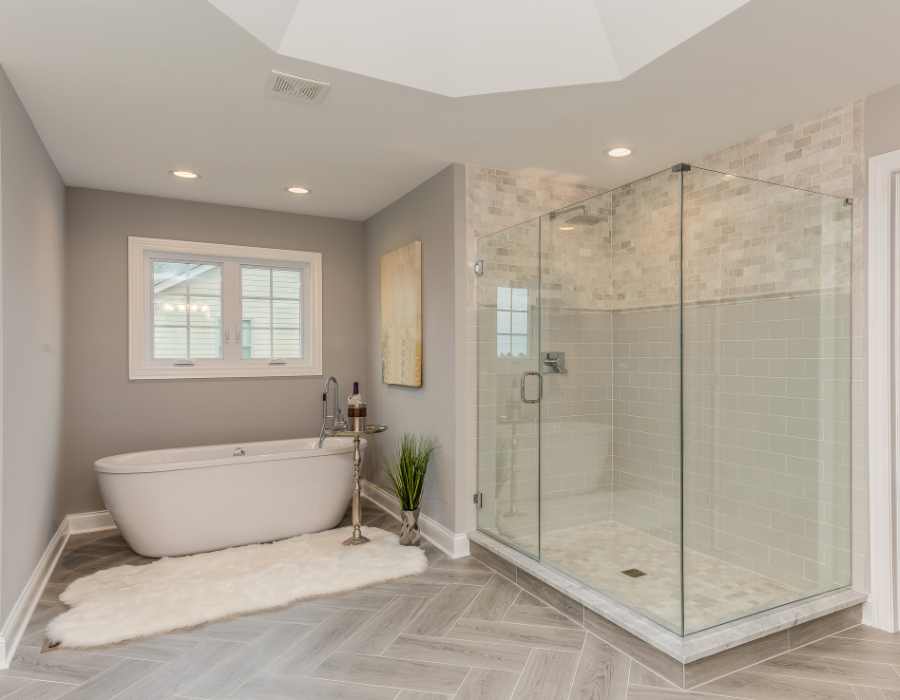
Cleaning and Maintenance Tips
Regular cleaning and maintenance are crucial to keep your tub in pristine condition. Use mild, non-abrasive cleaners to avoid damaging the surface. For acrylic and fiberglass tubs, avoid harsh chemicals that can cause scratches.
Cast iron and enameled steel tubs require more attention to prevent rust and chipping. Stone resin tubs should be cleaned with a gentle cleanser to maintain their natural finish.
Avoiding Abrasive Cleaners
Abrasive cleaners can damage the surface of your tub, causing scratches and dullness. Instead, use soft sponges or cloths with mild cleaning solutions. For tougher stains, a mixture of baking soda and water can be effective without harming the tub’s finish.
Conclusion
Choosing the right tub involves considering various factors, including material, style, installation requirements, and budget. Understanding the different options available can help you make an informed decision that meets your needs and enhances your bathroom’s functionality and aesthetics.
Whether you prefer the classic appeal of a cast iron tub, the modern elegance of a freestanding tub, or the therapeutic benefits of a whirlpool tub, there is a perfect tub out there for you.
Transform your bathroom into a luxurious retreat with Fairhope Walk-in Showers and Tubs. Our expertly crafted walk-in showers and tubs provide the perfect blend of safety, comfort, and style.
Contact us today to schedule your consultation and start your bathroom remodeling!